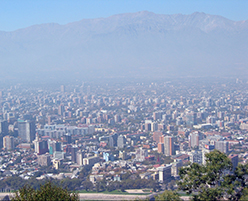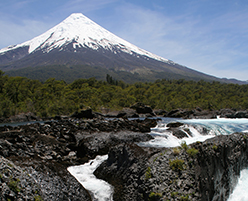Chile's extraordinary, elongated shape stretches nearly 3,000 miles long but only 150 miles across at its widest point and squeezed between the Andes Mountains and the Pacific Ocean, Chile offers a bewildering variety of climates and landscapes ranging from the Atacama Desert, the world's most arid, to the rainiest spot on the planet with a Mediterranean landscape in the center, an Alpine district in the mid-south and icy fjords in the deep south.
The county's quirky and vibrant capital, Santiago de Chile, enjoys a spectacular setting: sprawled across the fertile Santiago valley, 62 miles from the Pacific coast, the city is dominated by the mighty Andes to the east and a smaller coastal mountain range to the west. In the bustling city centre, modern structures sit alongside colonial buildings. This is a city which offers lively atmospheric markets, colourful energetic street life and a fine collection of restaurants and nightlife.
In the north lies the dry Atacama Desert, said to be the driest in the world, there are areas where it hasn't rained for 400 years. With zero humidity and numerous natural mineral sources the desert takes on rock formations of a fantastic kind, with a background of volcanoes in the distance. There are salt lakes full of flamingoes, geysers which erupt at daybreak, oases of a miniature and perfect kind, countless archaeological relics which were perfectly preserved by the dryness and minerals. There are special plants and cacti and, in parts of the desert after a rare fall of rain, carpets of desert flowers.
Famous for its spectacular panorama of bright emerald and turquoise lakes whose surfaces mirror snow-capped volcanoes and sprawling forests, Chile's Lake District is picture perfect. Rolling hills scattered with hundreds of lakes and lagoons give the district its name. You cannot help to be attracted by the beauty of its countless national parks and nature reserves. The Chiloe Archipelago consist of hundreds of islands, the largest one being Isla Grande; it was almost completely isolated from the rest of Chile for many years and that is how it retained its rich ethnic and folkloric traditions and mythology.
While in the far south the Torres del Paine National Park is one of the most beautiful national parks in South America and is definitely the highlight of every Chile trip. Full of unique wildlife and nature the park offers scenery that will even awe the most experienced traveller. Doubtlessly, it is one of the most beautiful untouched and almost unexplored corners of our planet.



